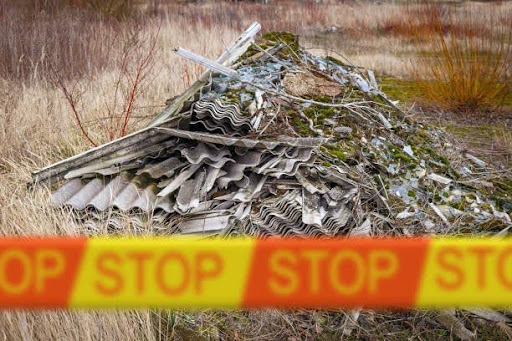In homes and workplaces, asbestos lurks as a hidden menace, necessitating a meticulous approach to removal. Safeguarding health and well-being hinges on understanding the importance of eliminating asbestos and adopting effective strategies. So, why is asbestos removal paramount? Asbestos fibers, when disturbed, become airborne, posing severe health risks when inhaled. Chronic exposure may lead to life-threatening diseases like lung cancer and asbestosis.
Table of Contents
The Best Way to Tackle Asbestos Removal:
The journey begins with a comprehensive assessment of the property. Professionals carefully identify asbestos-containing materials, determining the extent of the problem. From there, a systematic removal plan is crafted, prioritizing safety. Trained personnel execute the removal, adhering to strict safety protocols, including wearing protective gear and employing specialized tools. The disposal of asbestos waste is equally critical, ensuring it doesn’t pose a threat to the environment or human health.
Why Seek Professional Help?
While DIY solutions may seem tempting, asbestos removal in Omaha demands specialized knowledge and equipment. Professionals bring expertise to distinguish between asbestos-containing materials and harmless ones, minimizing unnecessary removals. Moreover, their experience ensures a thorough job, reducing the risk of asbestos fibers lingering after removal. Experts follow industry regulations, safeguarding against legal issues and ensuring compliance with safety standards.
Nuances of Asbestos Removal in Omaha:
The fact is , asbestos removal is governed by local regulations. Professionals at AMI Environmental understand these nuances, tailoring their approach to Omaha’s specific requirements. They are familiar with the common sources of asbestos, including insulation, tiles, and roofing materials, allowing for targeted and efficient removal.
Here are few things you must keep in mind
Thorough Inspection: A detailed examination of the property to identify asbestos-containing materials.The process commences with an exhaustive survey of the property, leaving no corner uninspected. Trained professionals meticulously assess various materials, from insulation to flooring, checking for the presence of asbestos. This detailed scrutiny ensures that no asbestos-containing material goes unnoticed, providing a comprehensive understanding of the scope of the issue.
Safe Containment: Ensuring that asbestos fibers are contained during removal to prevent their dispersion. Containment is a critical phase of asbestos removal. Professionals implement meticulous strategies to prevent the release of asbestos fibers into the air. This involves sealing off the affected area, using specialized barriers and negative air pressure systems. By isolating the workspace, they minimize the risk of asbestos fibers spreading to uncontaminated areas, ensuring a safe and controlled removal process.
Proper Removal Techniques: Employing industry-approved methods to eliminate asbestos safely. Asbestos removal isn’t a one-size-fits-all process. Professionals employ industry-approved techniques tailored to the specific asbestos-containing materials and the nature of the property. These methods may include wet removal, where the material is kept damp to prevent the release of fibers, or using specialized vacuum systems to capture asbestos particles. The goal is to eliminate asbestos efficiently while minimizing the risk of fiber release.
Disposal Compliance: Adhering to regulations for the safe and legal disposal of asbestos waste. Disposal of asbestos waste is a highly regulated process, and compliance is non-negotiable. Professionals adhere to local and federal regulations, ensuring that asbestos waste is securely packaged and transported to authorized disposal sites. By following stringent disposal protocols, they contribute to environmental protection, preventing the release of asbestos into landfills or other unauthorized areas.
Post-Removal Air Quality Testing: Conducting tests to confirm that the air is free from asbestos fibers. After removal, the job isn’t complete without confirming that the air is free from asbestos contamination. Air quality testing is a crucial step, involving the collection of air samples from the workspace. These samples undergo thorough analysis to ensure that the concentration of asbestos fibers meets safety standards. This final checkpoint guarantees that the environment is safe and habitable, offering peace of mind to occupants and ensuring the success of the asbestos removal process
Asbestos Testing Kit in Omaha: A Preliminary Step:
For those keen on initial assessments, an asbestos testing kit in Omaha offers a convenient starting point. However, it’s essential to recognize the limitations of such kits. While they can provide initial insights, a professional assessment remains indispensable for certainty.
Final Thoughts:
In the context of asbestos concerns, proactive removal emerges as the linchpin for a healthier environment. Asbestos removal isn’t just about compliance; it’s about safeguarding lives. Entrusting this crucial task to professionals ensures thorough, safe, and compliant removal, minimizing health risks and contributing to a safer community. When considering asbestos-related concerns in Omaha, AMI Environmental stands as a trusted partner, offering expertise that aligns with the city’s unique requirements.

